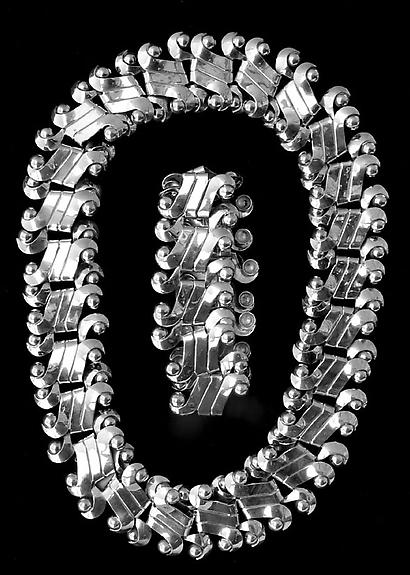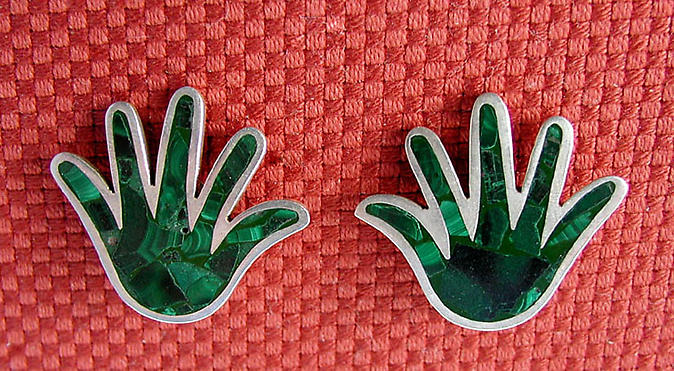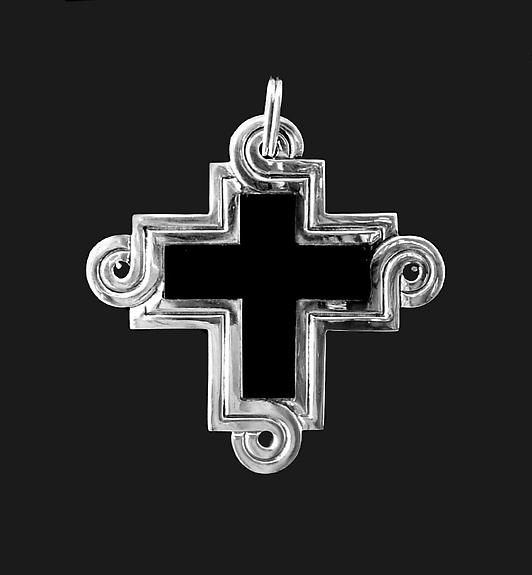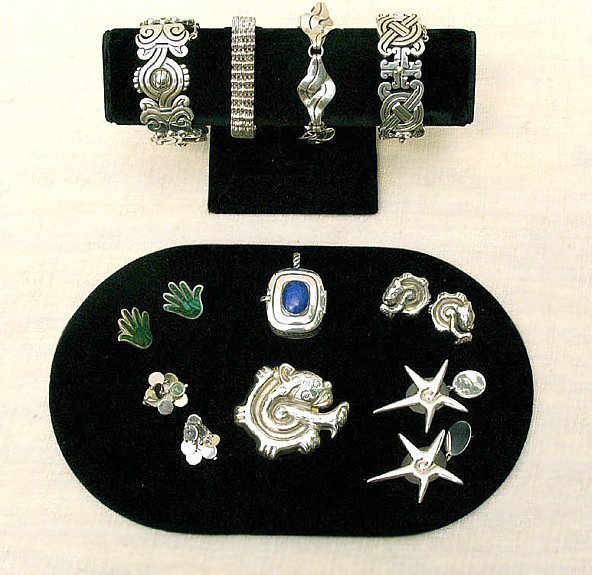William Spratling Design
Today the small Mexican city of Taxco is recognized as the silver art epicenter of the western hemisphere, and Spratling's work is known around the world by collectors of handcrafted fine metal. Taxco's renown can be traced to Spratling, one of its adopted sons, for her native artists had often refused to work in the relatively inexpensive medium of silver for which Taxco is now so famous.
In 1926, William Spratling, a New Yorker by birth, traveled to Mexico to deliver a lecture at the National University of Mexico. He fell in love with the place and especially with the historic silver mining city of Taxco where he bought a home. By 1931 Spratling had opened a shop dealing in silver articles of his own design. Over the next thirty-five years, Spratling employed a host of craftsmen to execute the designs which Mexico, its history, art, archaeology and tradition inspired in him.
Although he is most widely known for his silver jewelry, much of Spratling's output took the form of trays, pitchers, and flatware for which he is justly admired. Spratling's silver work is distinctive. At once Olmec and deco, the designs seem to blend the classic and the contemporary. The pieces often exhibit an architectural quality in the way one link meets another link in a bracelet or in the craftsmanship of a clasp on a necklace.
Since Spratling's death in 1967, his studio has continued to flourish, reproducing his designs under the name of Sucesores de William Spratling. Pieces of Spratling's silver art produced during his lifetime have become sought-after collector's items. Those produced later have come to be known as little masterworks. In either case, Spratling's unique mark is evident on each piece he fashioned.



